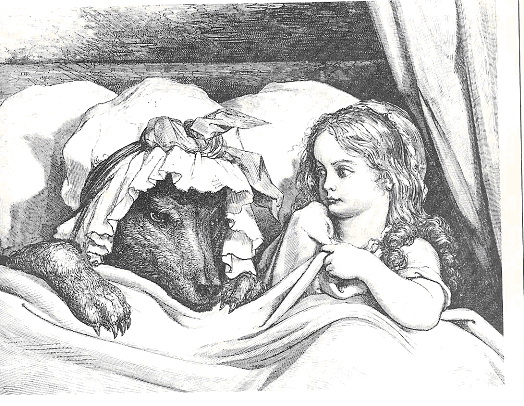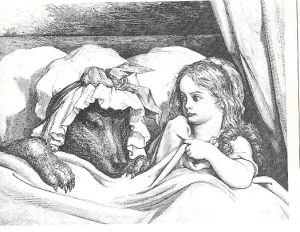
To Disney or not to Disney? | Versions of children’s books.
Does it matter which version of a classic story you read to your child? Well – yes and no. You can be fairly sure the time tested magic of these tales, as long as age appropriate, will probably spread their enchantment, whichever the version. But there is more to it.
What started me thinking about this was some additional suggestions for popular books for two and a half year olds that came my way after my last post:
The Gingerbread Man
The Three Billy Goats Gruff
The Three Bears
Little Red Riding Hood
These classics, mostly originating as oral tales, come in many written versions. Different story tellers have told and illustrated the tales in different ways over time. Did you know that Goldilocks, for example, was originally a fox, not a girl, in earlier versions of the story? If you want to learn more about changes in these tales, dip into Iona and Peter Opie’s book, The Classic Fairy Tales. It is a fascinating study.

Dore’s illustration of Red Riding Hood, 1872, from the Opie’s Classic Fairy Tales.
Modern retellings of classic tales with a wide range of illustration styles continue to be produced. Call up Google images and type in a title or a character’s name to see what I mean.
Each version of a classic tale, through its choice of words and style of illustration, tells a different story. Some wordings are so beautifully crafted that you find yourself slipping into the forest with the characters, pausing there wide-eyed in delicious fear, making judgements and weighing up the possibilities. Other writers tell their stories more prosaically leaving a reader’s senses and empathies unengaged.
It is not only the words of the stories that carry values, create a moral world and play with stereotypes. For example, if Goldilocks lives up to her name and is pictured as the traditionally beautiful golden long-haired girl (as she is in the illustration below), then she is somehow made into a virtuous heroine with right on her side – even though she is the one to break into the three bear’s cottage and steal their food!

From Raphael Tuck’s ‘Combined Expanding Toy and Painting book series.’ c 1900
If, on the other hand, she is pictured as a dumpy, curly haired miss, with very poor dress sense, the story changes. The bears wouldn’t stand a chance against her! You can imagine this Goldilocks giving the door a good bang or even a kick, and shouting loudly, ‘Is anyone there? I’m hungry.’ Same story, but very different messages being sent through the illustrations.
So, is it ok to stick with a Disney version of one of these famous tales. Probably not. Children deserve to hear well written, well illustrated, age appropriate versions of classic tales. I wouldn’t avoid a Disney version but reading different versions at different times seems to me a good option. After all, children must to learn to discriminate for themselves. And it’s good for children to learn there are different ways of telling – a vital understanding that takes time to absorb and a concept on which many other concepts depend.
In my experience, children listening to classic tales become quite still and quiet. There is a special quality to their silence. You can actually see the magic of the story take hold. Have you found this? Are there any versions of classic tales you would recommend?

A different kind of Goldilocks.
* * * * * * * * *

Recent Comments